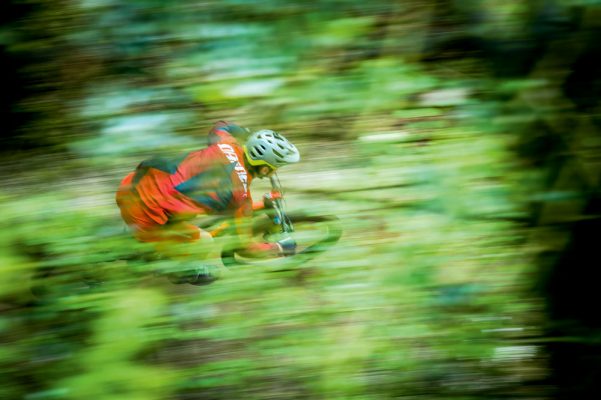Pump it up, er... down.
Pump or pedal? Time for science to reveal whether it’s faster to pump or pedal on downhills.
There’s no easy, scientific way to answer that question on your own without repeatedly thrashing down the same slope, switching between coasting and cranking with each descent.
Yes, it is physically possible to conduct the experiment yourself with a stopwatch and a power meter, but climbing back up for the umpteenth time to get enough meaningful data is going to be soooooo drab. Fortunately, someone has done it already, so you won’t have to.
A group of sports scientists in New Zealand somehow persuaded eight national level XC riders to volunteer as lab rats. First they put them on static ergometers and made them pedal until exhaustion. The idea was to work out how efficient each of them was at using oxygen and climbing virtual hills. It gave them a benchmark against which to measure their performance in the real world.
Next they strapped them all in turn to a Giant Anthem 27.5 fitted with a SRAM Quarq 2275 power meter and got them to ride to the top of the hill, wearing not only a heart-rate monitor, linked to a Garmin Edge 510, but also a mask to measure their oxygen uptake.
Finally, they let them head down the hill. When they’d done that, they had to do it all over again. And again.
The clever thing with the experiment is that the three descents were different. One was freewheeling down a road. Another was freewheeling off-road. The third was down the same off-road trail but pedalling. All three ended at exactly the same place so the difference in height from top to bottom was identical each time.
The results show
Afterwards the boffins checked the data from the total of 24 descents.
As expected, riders used less oxygen when riding down the tarmac — probably because there were fewer vibrations for their muscles to absorb.
Next, the differences in times between coasting and cranking down the off-road trail were not significant.
Crucially, though, when the riders pedalled during the descent, they used more oxygen, even though they’d not actually put in much power.
In other words, they’d not gained any performance benefit by turning the cranks, and weren’t as fresh as they would have been had they coasted.
Of course, every hillside trail is different, and there are going to be some that demand a different strategy. Yet the stark conclusion from the scientists is that, in general, riders should pump the trail, rather than pedal.
Which sounds good to us!




